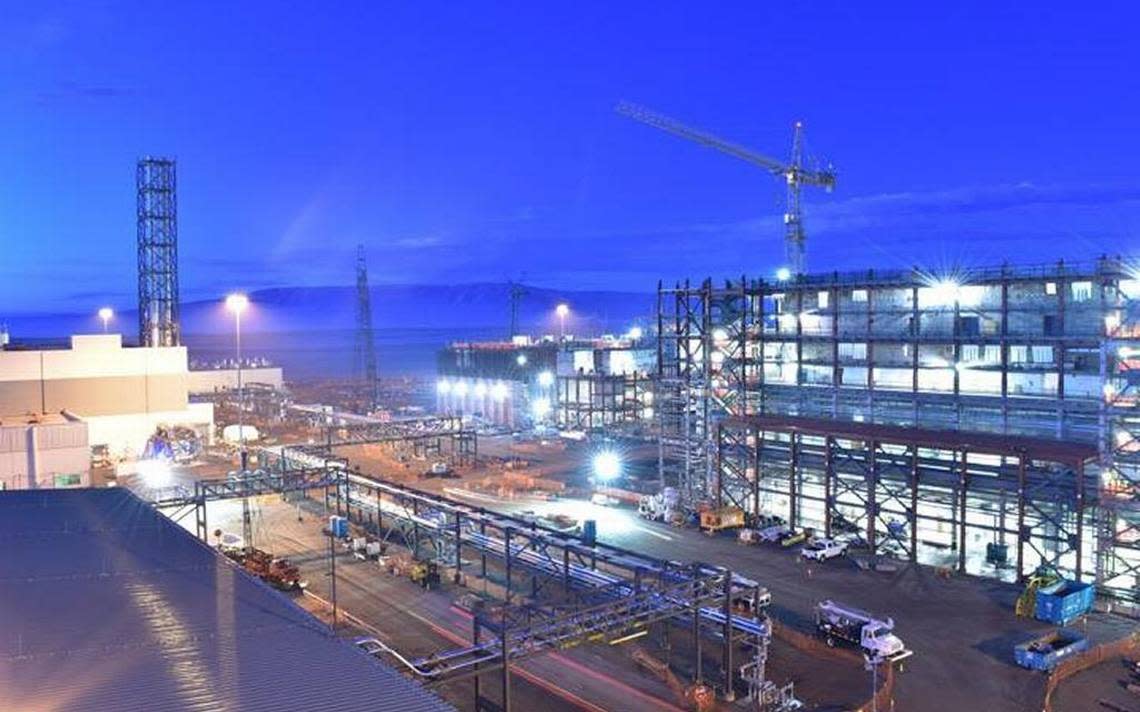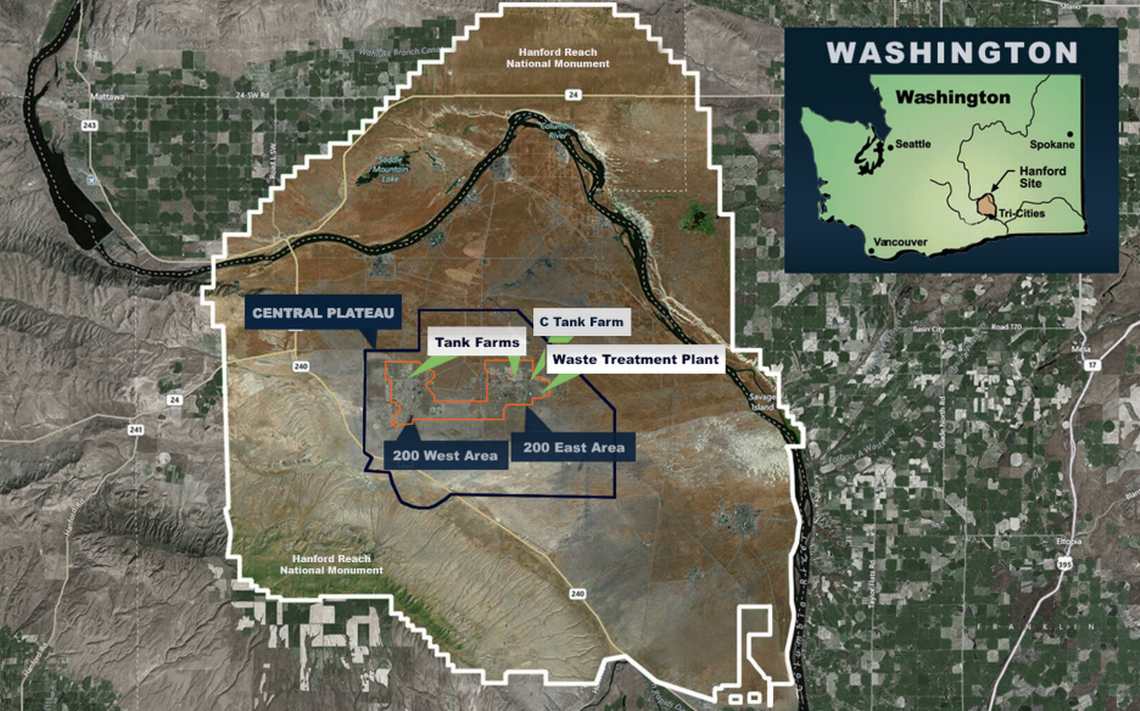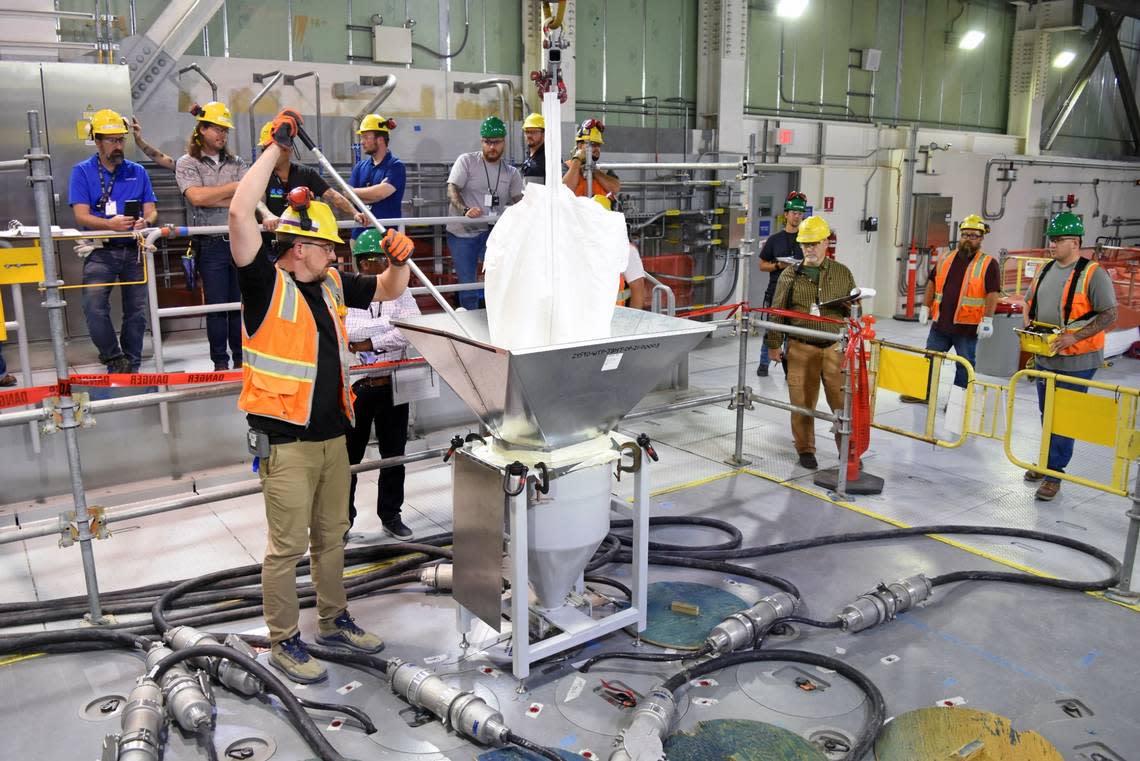World’s 2nd massive melter fires up in WA. How it will make radioactive waste safer
The heat up of a second melter at the Hanford site vitrification plant began early Tuesday morning and by Wednesday morning it had reached 300 degrees.
“Heating up our second melter is a significant accomplishment — even more so as we are doing it while operating melter one” and doing other work on the vitrification system, said Brian Hartman, the Bechtel National project director.
“Just as before, we will follow a robust, deliberative process during melter heatup,” he said.
Bechtel plans to slowly increase the temperature, with several holds, or pauses, as interim temperatures are achieved until the melter reaches 2,100 degrees. The goal of 300 degrees reached Wednesday was the first hold point.

The heatup process is expected to take several weeks, the Hanford Advisory Board was told Wednesday.
“Achieving operational temperature and the concurrent running of both melters will represent a major step toward future immobilization of Hanford tank waste,” the Department of Energy said in a message to the advisory board Wednesday.
If the project proceeds as planned, both melter will remain hot for their planned life of five years, about the time they are expected to be swapped out with new melters to continue glassifying waste.
The first melter has been used to fill four canisters with glass, and that work is continuing to build proficiency in each of four crews that operate the melter around the clock.
Only glass beads are added to the melters during their initial test operation. Later this year chemicals to simulate waste will be added to the first melter in a step called cold commissioning. Hot commissioning will be done with radioactive waste.
Plans call for treating radioactive waste in 2025, making the melters the largest in the world doing that work.
DOE’s Savannah River, S.C., site began operating a facility to vitrify less complex radioactive waste in 1996.
“We’re excited to see this next milestone achieved on the path to startup of treating low-activity tank waste at Hanford,” said Stephanie Schleif, the new manager of the Washington state Department of Ecology, a Hanford regulator. “We’ll continue to track the progress to support the schedule for hot commissioning in summer next year.”
Work toward melter heatup
It’s been a long road to get to this point in the Hanford vitrification process.
Construction on the Waste Treatment Plant, or vitrification plant, started nearly 22 years ago and continues.
The plant will vitrify much of the 56 million gallons of radioactive and hazardous chemical waste in underground tanks, some filled with waste as early as the 1940s and many of the tanks prone to leaking.
The Hanford nuclear reservation adjacent to Richland in Eastern Washington produced two-thirds of the plutonium for the nation’s nuclear weapons program from World War II through the Cold War.

The tank waste is the byproduct of chemically processing irradiated uranium to remove plutonium.
In 2025 the vitrification plant is expected to start mixing the least radioactive waste separated out of the tank waste, called low-activity waste, with glass forming material to turn it into a stable glass form at the plant’s Low Activity Waste Facility’s two melters.
The waste is being glassified for permanent disposal.
Work on the vitrification’s High Level Waste Facility, which is not fully constructed, continues to meet a federal court deadline to start treating the most radioactive tank waste in 2033. Only about 10% of the tank waste is expected to be high-level radioactive waste.
Bechtel National, the contractor building and commissioning the vitrification plant for DOE, started up the first melter at the plant’s Low Activity Waste Facility in October 2022.
But as temperatures approached 300 degrees Fahrenheit, the heatup was halted as a problem was discovered with the power supply to the melter’s startup heaters.

Temperatures were rising in the power supply cabinets, and pictures taken after the heatup was halted showed blackened inductors in the worst of three cabinets.
DOE and Bechtel then launched a thorough troubleshooting process, seeing how widely the problem extended and making changes, including ordering and installing some new parts or equipment.
A second attempt to heat up the second melter started in June 2023 and was successful. The melter filled a first container with glass before the end of 2023 in the test run.
